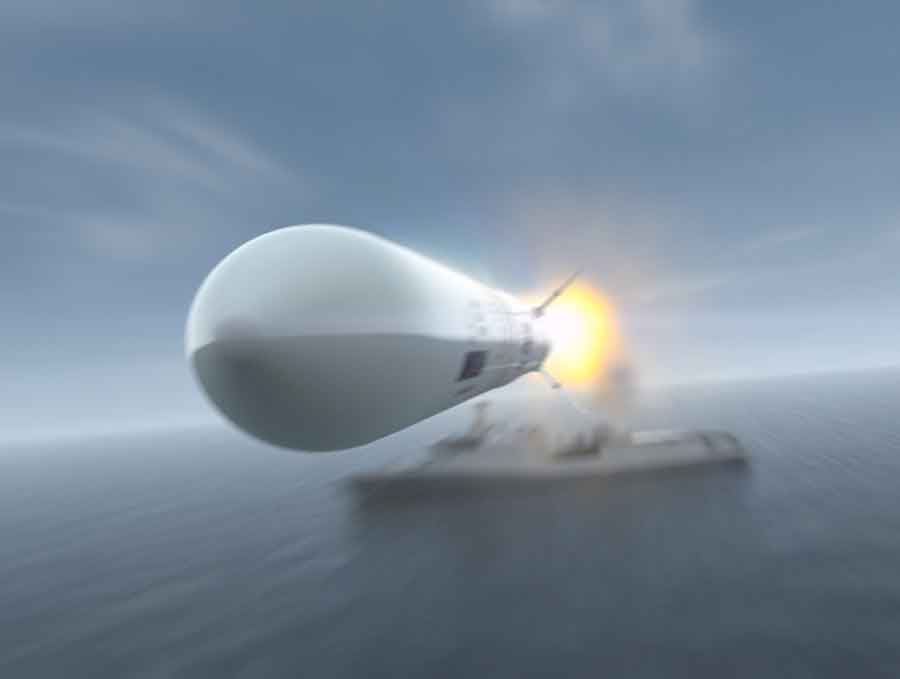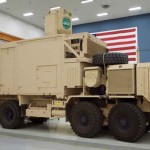The core Team Complex Weapons (Team CW) air defence missile development programme – the Common Anti-air Modular Missile (CAMM) for the Future Local Anti-Air Defence System (FLAADS) – has been the catalyst for the creation of a new business relationship between MBDA and Thales UK’s Belfast site.
Over the last year, as part of on-going activity to develop the UK Complex Weapons (CW) supply chain and to realise the complementary skills of Thales, the two companies have been exploring opportunities to work together on CAMM, drawing on the missile design and manufacture capabilities in Northern Ireland.
Work placed with Thales Belfast on this important development project now exceeds £1M and has also opened up opportunities for a further £8M of manufacturing work in the next phase of the project. Thales is involved in a number of aspects of the CAMM Demonstration project with work now covering the assessment and modelling of the thermal management within the missile, structural analysis work, and the use of precision manufacturing capabilities to make a number of the missile components.
Steve Wadey, MBDA Executive Group Director Technical and Managing Director UK, commented that “This is a significant milestone between MBDA and Thales Belfast, demonstrating a new business relationship utilising CW capabilities across the UK in the most effective way for the benefit of our customers.”
Alex Cresswell, Executive Vice President for Land and Air Systems at Thales, said, “The companies are now planning to build on this successful start in the next few months by putting in place a single overall enabling contract to facilitate the efficient placement of future work. This illustrates the commitment of both MBDA and Thales to work together to benefit our complex weapon customers.”
The companies are now exploring a number of areas of likely cooperation across other projects and throughout the product lifecycle. In the area of In-Service Support (ISS), for example, the companies are working together to see what additional value can be delivered to the UK customer by exploiting the opportunity created by the British Army re-basing decision to bring all of its current air defence assets together at Thorney Island.
In addition, MBDA and Thales UK’s Basingstoke site have also taken significant steps forward over the last six months using two pilot projects, focused on missile safety and arming units and intelligent fuzes, to transform the traditional transactional customer-supplier relationship into one where both parties are actively working together. In January 2012, MBDA selected Thales Basingstoke to supply the CAMM laser proximity fuze under an £11m contract.
MBDA is developing a common missile that will meet the future anti-air target requirements of Navies, Armies and Air Forces. Given that the target set, ranging from fast jets and helicopters to cruise missiles and UAVs, is similar across the sea, land and air domains, a weapon solution maximising modularity and commonality has obvious cost and logistics benefits. MBDA’s common missile is called CAMM (Common Anti-air Modular Missile) and is currently in MoD funded development as part of the Royal Navy’s Sea Ceptor weapon system. CAMM will be designed for exportability and a CAMM based weapon system provided by MBDA can be tailored for an overseas customers’ single service or cross service operations.
FLAADS is the far-reaching MoD programme aimed at delivering a new air defence system not only for the Royal Navy but also for the British Army to replace its Rapier deployable air defence system. At the heart of both systems (SEA CEPTOR for the Royal Navy and the future CEPTOR-based land system for the British Army) is MBDA’s Common Anti-air Modular Missile (CAMM).
The proximity fuze contract followed almost 5 years of Thales research and development and collaborative working with MBDA on the FLAADS/CAMM Concept and Assessment phase. The proximity fuze solution improves performance whilst significantly reducing price, through the use of modularity, generic signal processing and COTS components.





